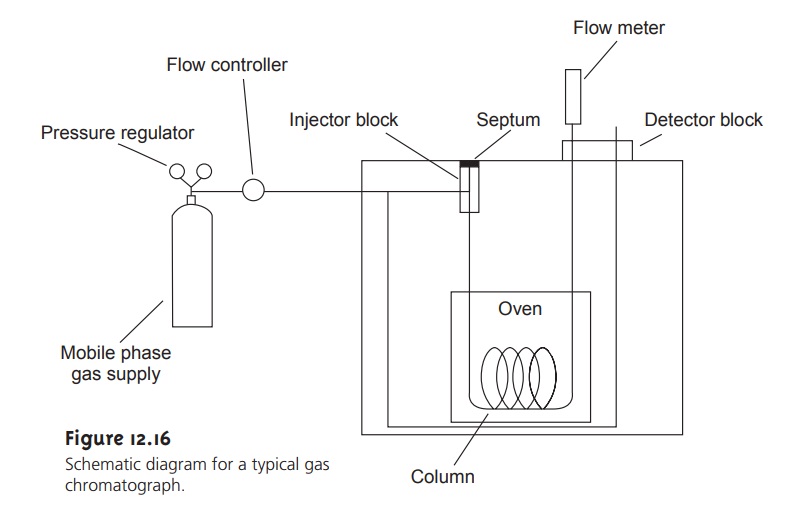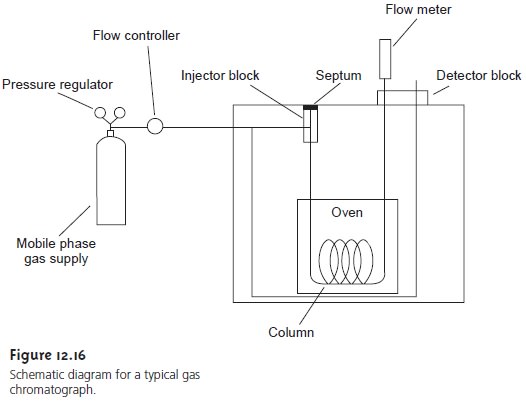Chapter: Modern Analytical Chemistry: Chromatographic and Electrophoretic Methods
Gas Chromatography: Mobile Phase

Gas Chromatography
In gas chromatography (GC)
the sample, which
may be a gas or liquid, is injected
into a stream of an inert gaseous
mobile phase (often
called the carrier
gas). The sample is carried through
a packed or capillary column
where the sample’s
compo- nents separate based on their ability to distribute themselves between the mobile and stationary phases. A schematic
diagram of a typical gas chromatograph is shown in Figure 12.16.

Mobile Phase
The most common
mobile phases for
GC are He,
Ar, and N2, which have the
ad- vantage of being
chemically inert toward
both the sample
and the stationary phase. The choice of which carrier
gas to use is often
determined by the instrument’s de- tector. With packed columns
the mobile-phase velocity
is usually within the range of
25–150 mL/min, whereas
flow rates for capillary columns
are 1–25 mL/min.
Ac- tual flow rates
are determined with a flow meter placed
at the column outlet.
Related Topics